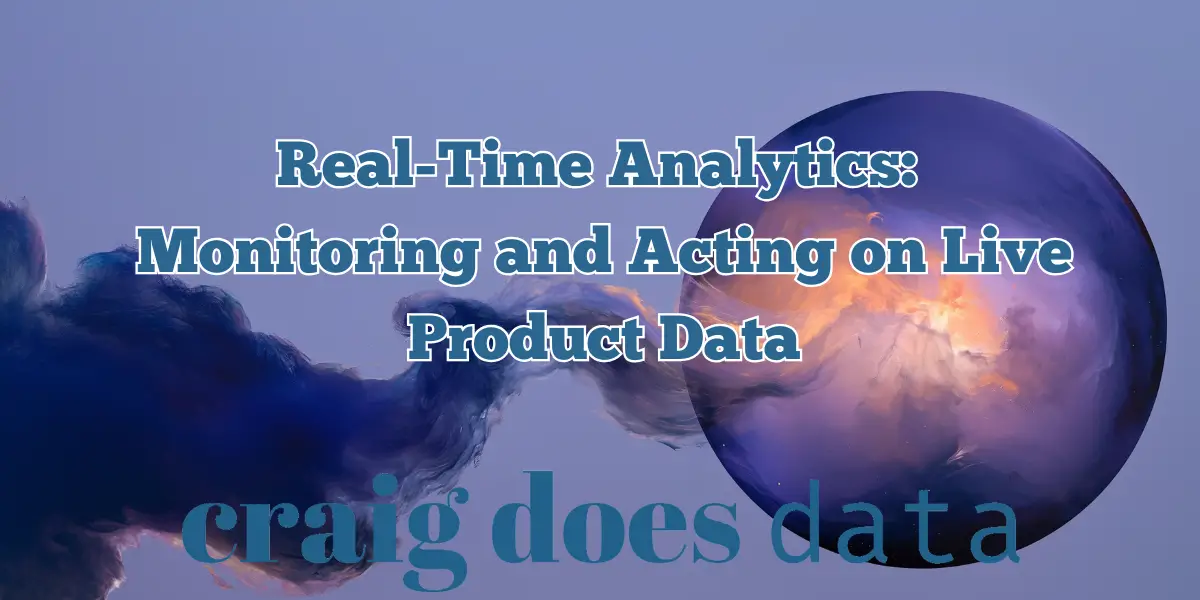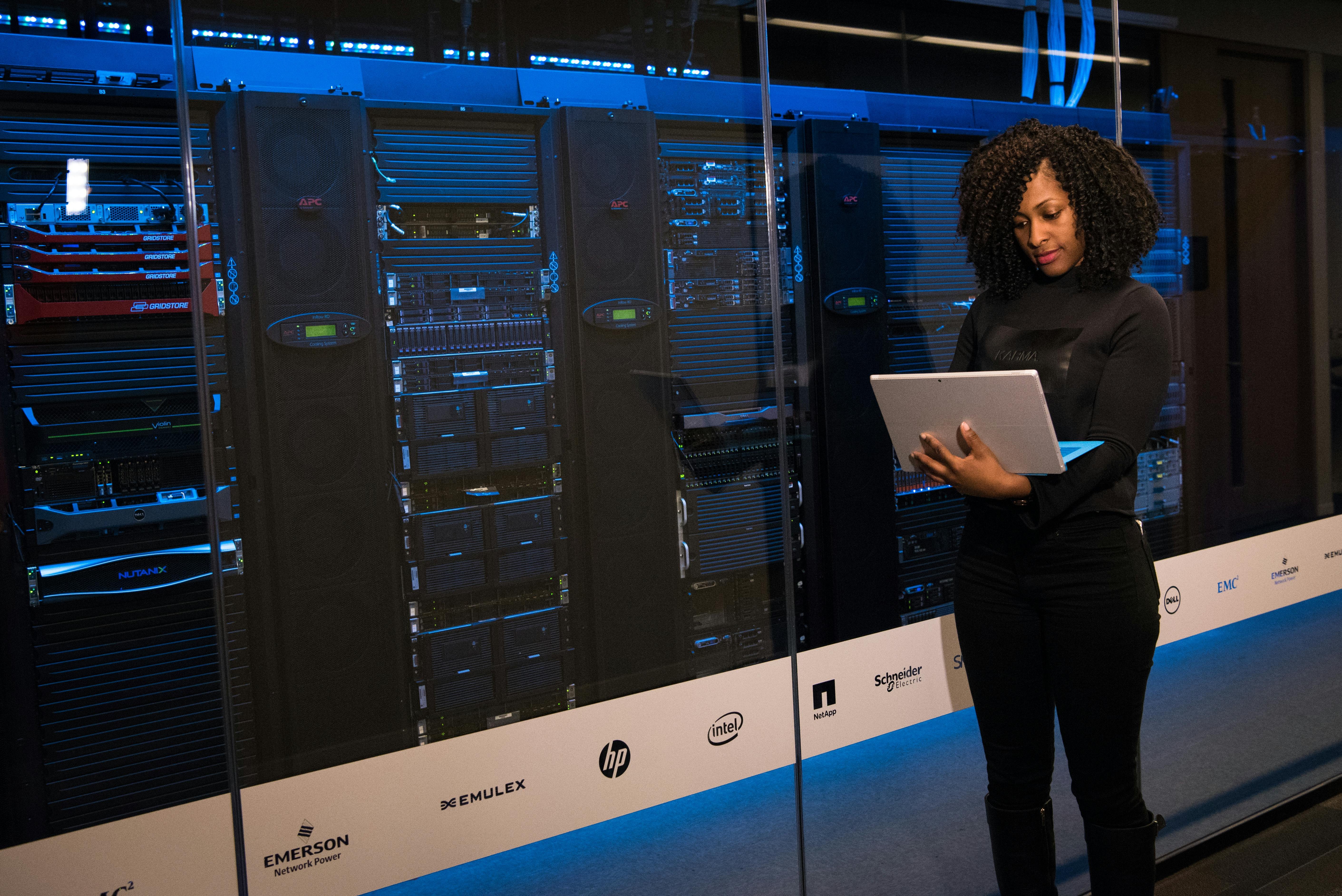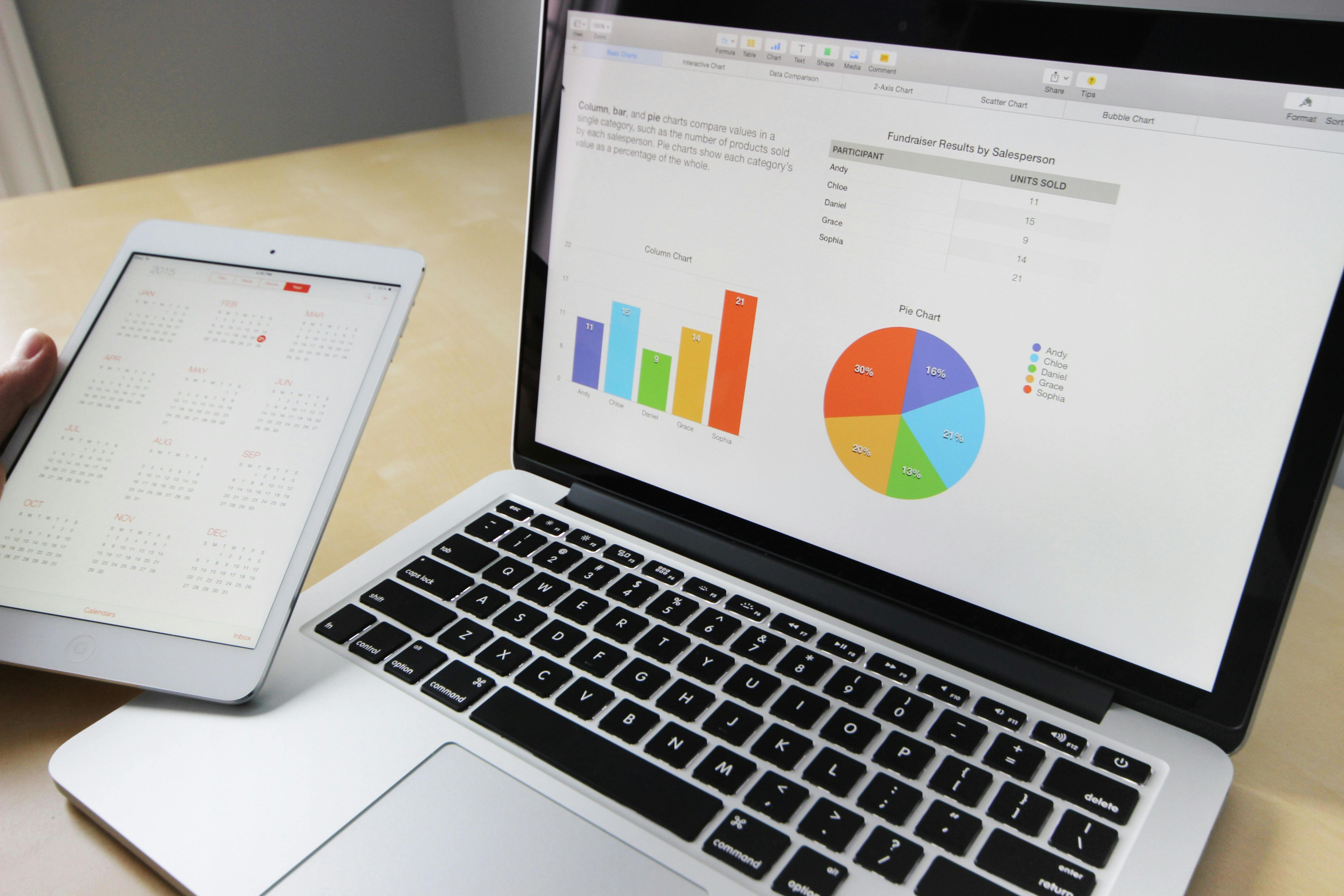
Real-Time Analytics: Monitoring and Acting on Live Product Data
In today's fast-paced digital landscape, data is generated continuously and in unprecedented volumes. Businesses that once relied solely on periodic or batch-driven reporting are now seeking more immediate insights to stay competitive, quickly address issues, and seize opportunities. Real-time analytics represents a paradigm shift, enabling organizations to monitor and act on live product data within seconds or milliseconds rather than days or weeks. This shift has profound implications for how we detect trends, understand user behavior, and optimize products and services.
This article aims to demystify the concept of real-time analytics and offer practical guidance on how to leverage it effectively for live product data. Whether you’re an executive considering strategic investments, a data engineer grappling with streaming technologies, or a product manager trying to refine the user experience, understanding the fundamentals of real-time analytics is critical in today’s data-driven world. By the end of this comprehensive guide, you will not only grasp the essential concepts but also be equipped with actionable insights, best practices, and real-world examples to help you harness the full power of real-time analytics in your organization.
We’ll begin by defining real-time analytics and showing how it differs from more traditional, batch-oriented analytics. Then, we’ll look at why monitoring live product data is so crucial for modern businesses. Next, we’ll explore the key components that make real-time analytics systems possible, from data collection pipelines to visualization dashboards. We’ll discuss popular tools like Apache Kafka and Amazon Kinesis, and outline how to choose the right technology stack. Then, we’ll dive into the challenges you might face when implementing real-time analytics and how to overcome them. Real-world case studies will illuminate the impact of successful strategies, followed by a forward-looking discussion on future trends in the field. By the article’s conclusion, you’ll see how transformative real-time analytics can be and how you can begin your own journey to implementing it.

1. Understanding Real-Time Analytics
Real-time analytics refers to the process of gathering, processing, and analyzing data as it is created. In contrast to traditional analytics methods, which often rely on scheduled batch processes and historical data, real-time analytics aims to deliver insights within seconds or milliseconds of data generation. This near-instantaneous turnaround is typically achieved through modern streaming architectures and in-memory processing frameworks that handle data continuously rather than in discrete chunks.
While the concept of real-time analytics has existed in some form for decades—particularly in industries such as finance and telecommunications—its adoption has accelerated in recent years. Driving this surge is the rise of big data technologies, widespread cloud adoption, and the evolution of distributed computing systems capable of scaling horizontally. Businesses of all sizes, from small startups to large enterprises, are realizing the unique advantages that real-time data insights can bring. This includes the ability to detect anomalies immediately (e.g., fraud or security breaches), optimize operational processes, and tailor product experiences on-the-fly.
The benefits are multifold. On the operational side, real-time analytics empowers organizations to maintain system health and mitigate downtime by spotting issues early. On the customer experience front, real-time data paves the way for personalized interactions, dynamic content delivery, and immediate feedback loops. In the realm of logistics, it can mean optimizing delivery routes as conditions change, while in retail, it might mean altering pricing strategies as demand fluctuates throughout the day. Essentially, real-time analytics provides a window into the here and now, allowing data-driven decisions to be made with minimal lag.
Many industries are already reaping the rewards of real-time analytics. Financial services use advanced streaming systems to catch fraudulent transactions the moment they occur. E-commerce giants monitor user interactions across websites and apps, adjusting recommendations and deals in real time to maximize conversions. In telecommunications, operators leverage streaming telemetry data to anticipate network congestion and proactively reroute traffic. Even manufacturing and supply chain operations benefit from real-time machine sensor data that can improve predictive maintenance and reduce production costs. Such breadth of application underscores the critical role that real-time analytics plays in fostering innovation and maintaining a competitive edge.
In the sections to come, we will delve deeper into why monitoring live product data is crucial, focusing on how real-time insights drive better understanding of customer behavior and product performance. We’ll also look at the key technical components that form the backbone of real-time analytics. Understanding the foundations laid here will be essential as we explore more advanced topics, practical advice, and real-world success stories in later sections.
2. The Importance of Monitoring Live Product Data
As digital products become more sophisticated and user interactions multiply, monitoring live product data has moved from a “nice-to-have” to a “must-have” capability for forward-thinking organizations. Gone are the days when a weekly or monthly report provided sufficient intelligence to manage a product roadmap or optimize user experience. Today, product teams and business leaders need continuous feedback to shape strategies, accelerate innovation, and maintain a competitive advantage.
One major reason for this shift is the ever-growing complexity of modern applications and services. Consider the scope of an e-commerce platform that caters to millions of visitors each day. A single glitch in the checkout process or a sudden spike in traffic can impact revenue and user satisfaction within minutes. By continuously monitoring and analyzing live product data—metrics like cart abandonments, page load times, or inventory levels—teams can quickly detect anomalies and respond before problems escalate. This real-time visibility not only helps maintain service levels but also allows organizations to optimize user engagement, adjust marketing campaigns on the fly, and capture emerging trends in consumer behavior.
Another critical aspect is understanding customer behavior at a granular level. Real-time analytics tools can capture clickstream data, user interactions, and in-app events as they happen. This wealth of immediate insight fuels rapid experimentation and personalization. For instance, a media streaming service might track user watch behaviors in real time, automatically suggesting content that aligns with their immediate interests. Similarly, a mobile gaming company can dynamically alter in-game challenges or special events based on the real-time activity of its user base, boosting engagement and revenue. The bottom line is that live product data helps organizations create experiences that adapt to individual users and evolving contexts in an agile manner.
Finally, live product data also offers strategic value. In a rapidly changing market, real-time insights can inform high-level decisions about product direction, resource allocation, and partnership opportunities. By linking real-time analytics platforms to key business performance indicators—such as conversion rates, sales figures, and customer support queue times—executives gain a pulse on how the organization is performing. This leads to more effective, data-driven decision-making and can even form the basis for advanced predictive modeling and machine learning initiatives.
In essence, monitoring live product data is not just about reacting swiftly to issues but also about proactively steering the business toward new growth opportunities. Whether you’re looking to improve operational efficiency, refine the customer journey, or experiment rapidly with new product features, real-time analytics is the engine that makes it possible. Next, we’ll examine the key components of real-time analytics systems—everything from the ways data is collected to the technologies that handle streaming and visualization.
3. Key Components of Real-Time Analytics Systems

Real-time analytics systems are composed of multiple interconnected layers, each responsible for specific tasks such as data collection, processing, storage, and visualization. While organizations may tailor these components to fit unique needs, a common framework has emerged that outlines how data flows from its source to end-users who interpret and act on it. The following sections detail each critical part of such a system, highlighting best practices and key considerations along the way.
Data Collection
The first step in any analytics pipeline is data collection—capturing raw information as it is generated. In a real-time context, data can originate from myriad sources: user interactions on a website, sensor readings from IoT devices, logs from servers, financial transactions, social media feeds, and more. To facilitate continuous ingestion, specialized data collectors or messaging systems are often deployed. These tools buffer incoming events and route them to downstream processing systems.
For instance, an IoT-based smart factory might generate millions of sensor readings per second, measuring everything from temperature to vibration levels on industrial machines. Without an efficient method to capture and transport this data, analysts and automated systems would never get the near-instantaneous view they need to detect mechanical issues early. Similarly, an e-commerce website can track page views, clicks, and custom events in real time by embedding tracking scripts or using server logs, which are then funneled into a message queue or streaming service. A robust data collection layer should scale seamlessly to handle peak loads, ensure data integrity, and minimize latency.
Data Processing
Once data is collected, the next step involves real-time stream processing. This layer cleans, enriches, and transforms incoming data, often applying complex business rules, aggregation functions, and even machine learning models on the fly. Stream processing engines, such as Apache Flink, Apache Spark Streaming, or cloud-native services in AWS, Azure, or Google Cloud, excel at handling these continuous data flows.
Suppose you’re operating an online gaming platform that needs to detect potential cheating behavior. A stream processing job can flag suspicious patterns—like an unusually high score increase over a short time—by comparing incoming game event data to established thresholds or model predictions. Alternatively, in a retail setting, you could use real-time processing to merge clickstream data with inventory counts, generating dynamic product recommendations or surfacing low-stock alerts to your warehouse team. Processing in real time demands efficient, fault-tolerant infrastructures that can handle variable load and automatically scale.
Data Visualization
Visualizing real-time data is crucial to help stakeholders quickly interpret and act on insights. Dashboards and alerting systems offer immediate snapshots of key metrics, enabling everything from operational monitoring to executive-level KPI tracking. Tools like Grafana, Tableau (with real-time data sources), or custom web applications can provide interactive, continuously updating interfaces.
The design of a real-time dashboard should prioritize clarity, latency, and relevance. For example, operations teams benefit from real-time error rate graphs and system health checks displayed on big screens, while product managers might prefer to see user engagement metrics and funnels. Having the ability to drill down to more granular data or even switch between real-time and historical views offers a more holistic perspective. Push notifications or alerting mechanisms also play a key role, ensuring that critical events—like a significant drop in sales or a sudden spike in user churn—are escalated to the right teams without delay.
Integration with Existing Systems
For many organizations, a real-time analytics platform cannot exist in isolation. It must integrate seamlessly with existing systems such as data warehouses, CRM platforms, ticketing systems, or ERP solutions. This integration enables businesses to combine real-time insights with historical data, offering a richer context for analysis. It also helps automate workflows by triggering downstream processes based on real-time events.
For instance, a streaming analytics solution might feed summarized results into a data warehouse like Snowflake or BigQuery for long-term storage and advanced analytics. Or it could send alerts to a Slack channel or an incident management system like PagerDuty, ensuring that the team can coordinate a response if an anomaly is detected. The goal is to make sure real-time analytics doesn’t become a silo but rather a key element in an organization’s broader data ecosystem. Achieving this often involves careful planning around data formats, APIs, security, and compliance considerations.
In short, setting up a real-time analytics system involves more than just technology selection. It requires a cohesive approach that factors in data collection, stream processing, visualization, and integration with the existing operational landscape. When these components come together, they form a powerful engine that empowers businesses to see what’s happening at any given moment—and respond in kind. Next, we’ll explore some of the most popular tools and technologies that enable real-time analytics to thrive.
4. Tools and Technologies for Real-Time Analytics
The real-time analytics ecosystem is rich with tools designed to handle every step of the data pipeline—from ingestion to processing to visualization. With so many options available, selecting the right technology stack can be daunting. However, a solid understanding of the leading platforms and key selection criteria will help you make informed choices tailored to your organization’s needs.

Popular Tools and Platforms
Apache Kafka: Originally developed by LinkedIn, Kafka is a high-throughput, low-latency messaging system widely adopted for its ability to handle massive data streams and ensure fault tolerance. Kafka uses a publish-subscribe model, making it easy for multiple consumers to tap into the same data stream. Its strong durability guarantees and community support have positioned Kafka as a default choice for many real-time analytics projects.
Amazon Kinesis: A fully managed service on AWS, Kinesis allows organizations to ingest, process, and analyze real-time streaming data at scale. It includes components like Kinesis Data Streams for ingestion, Kinesis Data Firehose for loading data into data stores, and Kinesis Data Analytics for stream processing. The service can integrate seamlessly with other AWS offerings, simplifying orchestration and reducing operational overhead.
Google Cloud Pub/Sub: Another managed publish-subscribe service, Pub/Sub is known for its global scalability and reliable message delivery. It works well for building loosely coupled, asynchronous systems, and it integrates tightly with Google’s data warehouse (BigQuery) and data processing frameworks (Dataflow).
Apache Flink and Spark Streaming: On the processing side, both Apache Flink and Spark Streaming offer robust frameworks for handling distributed data in real time. Flink is known for its low-latency event processing capabilities and exactly-once semantics, while Spark Streaming builds on the popular Apache Spark engine, making it easy to apply batch analytics skills to streaming workloads.
Grafana and Kibana: These open-source solutions are frequently used for real-time visualization. Grafana excels at creating dynamic dashboards fed by time-series databases like InfluxDB or Prometheus, whereas Kibana integrates seamlessly with the Elasticsearch stack. Both tools feature robust alerting mechanisms and customizable widgets, making them ideal for operations and monitoring.
Tableau and Power BI: While often associated with batch analytics and historical dashboards, both Tableau and Microsoft Power BI have evolved to include real-time connectors and live data dashboards. They provide a user-friendly interface, making them popular among business users who need to quickly create interactive visualizations without deep coding knowledge.
Criteria for Selecting the Right Tools
Scalability: Can the tool handle your peak data volumes without downtime or delays? If you anticipate significant growth, does the platform offer straightforward options for scaling vertically or horizontally?
Latency Requirements: Different applications have different latency needs. For instance, a financial trading platform might require sub-millisecond processing, while a product recommendation engine might be comfortable with near real-time (seconds). Choose technologies aligned with your strictest latency requirements.
Integration and Ecosystem: Seamless integration with your existing data stack—data warehouses, BI tools, CRM systems, etc.—is crucial. Also consider community support and the availability of tutorials or plugins.
Cost and Operational Overhead: Managed services like Amazon Kinesis or Google Cloud Pub/Sub can reduce the complexity of maintaining your own clusters, but often at a higher cost. Open-source platforms like Kafka can be cheaper but require more in-house expertise to manage.
Security and Compliance: Real-time data often contains sensitive information. Ensure that your chosen tools offer encryption (in-transit and at-rest), role-based access controls, and compliance with regulations like GDPR or HIPAA if needed.
Recent Advancements in Real-Time Analytics
The real-time analytics space is continuously evolving. Recent trends include serverless architectures that eliminate the need to manage streaming clusters, as well as new frameworks that integrate machine learning directly into data streams. AI-driven anomaly detection, for example, is becoming increasingly accessible, allowing businesses to automatically discover abnormal patterns in time-series data. Edge computing is also on the rise, reducing latency by processing data closer to where it is generated, such as IoT devices in remote locations.
As more organizations realize the strategic importance of real-time insights, we can expect further innovation in ease of use, scalability, and specialized capabilities, such as streaming machine learning and advanced data governance solutions. With a clearer picture of the available tools, the next step is to examine the challenges that can arise when deploying real-time analytics solutions—and how to overcome them.

5. Challenges in Implementing Real-Time Analytics
Despite its immense value, real-time analytics is not without challenges. Organizations adopting these capabilities must navigate issues related to data quality, sheer data volume, latency, and organizational readiness. Below, we address some of the most common hurdles and provide strategies for overcoming them.
Data Quality and Consistency
Ensuring high-quality data in real-time pipelines can be more complex than in batch environments. Data may arrive from disparate sources with varying structures, missing fields, or inconsistent timestamps. In the absence of robust data validation and governance processes, any errors introduced upstream can cascade quickly, skewing analytics and leading to poor decision-making.
Best practices include defining clear data schemas, employing schema registry services (for example, Confluent Schema Registry for Kafka), and implementing automated checks that flag anomalies or missing values. Data lineage tools can also help trace the journey of each record from ingestion to storage, making it easier to isolate the root cause of any data-related issues.
Data Volume and Scalability
Real-time analytics typically deals with high-velocity data, which can quickly balloon in volume. Systems not designed for horizontal scaling may struggle under peak loads, leading to increased latency or dropped messages. Building a highly scalable architecture often requires distributed systems that can add capacity on demand.
To handle massive data streams, modern approaches often involve partitioning or sharding data across multiple nodes. Cloud-based services that dynamically scale resources can also help. For instance, you could leverage managed streaming and serverless compute solutions to scale elastically, paying only for what you consume. Regularly load-testing your streaming pipeline and adopting auto-scaling practices are crucial steps in preparing for unexpected surges in data volume.
Latency and Network Constraints
One of the primary goals of real-time analytics is low latency—from when data is generated to when insights are actionable. Network constraints, inefficient processing pipelines, or data transformation bottlenecks can degrade performance. Achieving the desired speed often requires careful optimization, including strategic data partitioning, in-memory processing, and minimizing data hops.
Edge computing offers another way to reduce latency. By processing data closer to the source—such as on IoT devices or localized servers—you can mitigate round-trip times to a central cloud data center. In industries like autonomous vehicles or critical healthcare applications, edge computing can be a game-changer.
Skill Gaps and Complexity
Implementing real-time analytics requires specialized expertise in distributed systems, stream processing, and possibly machine learning. This can pose a challenge, especially for smaller organizations or those transitioning from traditional batch analytics. Training existing teams or hiring talent with experience in streaming technologies can ease the burden.
Another approach is leveraging fully managed cloud services or low-code tools that abstract away much of the complexity. While these services may come at a premium, they often reduce the learning curve and speed up deployment, which can be especially appealing for businesses wanting to focus on insights rather than infrastructure.
Best Practices to Overcome Challenges
Modular Architecture: Breaking the pipeline into modular components (ingestion, processing, storage, visualization) allows teams to tackle each part independently, simplifying troubleshooting and upgrades.
Automation and Testing: Automated deployment pipelines (CI/CD) and robust testing—including stress tests and chaos engineering—ensure that your system behaves as expected under varying conditions.
Clear SLAs and KPIs: Define what “real-time” means for your use case. Is it sub-second, sub-minute, or sub-hour? Establishing clear SLAs and KPIs ensures that all teams work toward the same performance goals.
In the following section, we’ll look at real-world examples—case studies that demonstrate how businesses have successfully navigated these challenges to reap the rewards of real-time analytics.
6. Case Studies: Success Stories of Real-Time Analytics

Understanding the theoretical aspects of real-time analytics is helpful, but seeing how organizations implement these technologies in real-world scenarios can offer even deeper insights. In this section, we’ll explore three case studies: a global e-commerce retailer, a healthcare provider, and a streaming entertainment company. Each faced distinct challenges and leveraged real-time analytics to address them effectively.
Case Study 1: Global E-Commerce Retailer
Challenge: A large e-commerce platform was experiencing periodic traffic spikes during promotional sales. The surge in concurrent users not only slowed down the site but also made it difficult to track inventory levels and user interactions in a timely manner. Their existing batch analytics pipeline led to delayed insights, often rendering them useless by the time they were acted upon.
Solution: The retailer deployed Apache Kafka for ingestion and Amazon Kinesis Analytics for on-the-fly data processing, integrating with a microservices architecture. Real-time dashboards in Grafana gave their operations and marketing teams immediate visibility into transaction volumes, cart abandonments, and server load. The system was designed with autoscaling in mind, so additional resources would automatically spin up during peak demand.
Outcome: With real-time analytics in place, the retailer reduced cart abandonment by detecting slowdowns in the checkout process and addressing them almost immediately. Inventory stock-outs dropped significantly as alerts prompted warehouse teams to replenish items, while the marketing department used live data to optimize promotional strategies on the fly. Sales rose by 15% during the first major promotional event after deploying the new system.
Case Study 2: Healthcare Provider
Challenge: A hospital network wanted to improve patient outcomes by monitoring critical vital signs and lab results in real time. Yet, compliance with strict healthcare regulations and the sensitive nature of patient data meant that any system had to be highly secure and fault-tolerant.
Solution: The IT department deployed a real-time analytics solution using a hybrid cloud architecture. Patient vitals collected via bedside monitors were encrypted and sent to a private on-premises Kafka cluster. The data was processed in near real time using Spark Streaming, applying rules to detect abnormalities like sudden drops in blood pressure. Alerts were securely sent to staff mobile devices, and anonymized data was forwarded to a cloud-based analytics platform for broader trend analysis.
Outcome: Medical staff were able to intervene faster during critical events, leading to a measurable decrease in complications for high-risk patients. Data security was maintained through encryption and strict access controls, satisfying regulatory requirements. The hospital also used the anonymized data for research, identifying patterns that informed best practices and policy changes.
Case Study 3: Streaming Entertainment Company
Challenge: A popular video streaming platform wanted to personalize content recommendations in real time to boost viewer retention. Their existing approach relied on daily batch updates to a recommendation engine, which often resulted in stale suggestions. Additionally, they needed instant alerts for any sudden rise in buffering or playback errors that could degrade user experience.
Solution: They implemented a streaming architecture using Google Cloud Pub/Sub for data ingestion and Apache Flink for low-latency processing. Machine learning models were applied in-flight to generate personalized recommendations based on the most recent user interactions. A real-time monitoring dashboard with auto-alerting capabilities was deployed to track quality of service metrics, such as buffering ratios.
Outcome: The platform saw a notable increase in user satisfaction and watch time due to more timely and relevant recommendations. Operationally, the real-time monitoring system cut issue resolution times by 40%, as engineers were able to pinpoint and address streaming quality problems within minutes rather than hours.
These three case studies underscore the adaptability and impact of real-time analytics across different sectors. By aligning technological solutions with specific business goals and operational constraints, each organization was able to overcome hurdles and reap significant benefits. Next, we’ll look ahead to the future of real-time analytics, where emerging trends like AI-driven insights and 5G connectivity promise even greater possibilities.

7. The Future of Real-Time Analytics
Real-time analytics has already proven its value in a wide range of applications, but the field is far from static. Rapid advancements in technology—driven by faster networks, more efficient processing hardware, and evolving software frameworks—are set to expand what is possible. In this section, we’ll explore some of the key trends shaping the future of real-time analytics and speculate on their potential impact.
AI and Machine Learning Integration
As organizations become more comfortable with machine learning, integrating AI models into real-time analytics pipelines is a natural progression. Instead of merely reporting events as they happen, advanced systems can predict future states or autonomously trigger actions. For example, AI-driven anomaly detection can assess millions of data points per second, identifying outliers that might indicate fraud or critical system failures.
Real-time recommendation engines are also gaining sophistication, harnessing deep learning to refine suggestions based on the most recent user data. Over the next few years, expect to see an uptick in low-latency inference solutions, including specialized hardware and cloud-based services optimized for streaming data.
Edge Computing and 5G Connectivity
The rollout of 5G networks and growing investments in edge computing will further reduce latency, enabling real-time analytics in scenarios previously constrained by bandwidth or network lag. Autonomous vehicles, drone fleets, and remote healthcare devices can all benefit from the ability to process and respond to data on the edge, without relying on a distant cloud data center.
This shift to decentralized processing will likely usher in new architectural paradigms, where analytics and machine learning are deployed across a continuum from edge devices to central data centers. Hybrid solutions may become more common, with certain workloads best handled close to the source and others in centralized, large-scale computing hubs.
Real-Time Collaboration and Data Sharing
As more businesses embrace real-time insights, the need for collaborative platforms that allow teams to interpret data collectively will grow. Expect to see an expansion of real-time analytics features in collaboration tools, enabling teams to annotate live dashboards, create shared alerts, and co-design experiments in real time.
Additionally, cross-organizational data sharing may emerge as a competitive advantage. In regulated industries, secure data exchanges that comply with privacy laws could allow businesses to share anonymized data streams in real time, jointly developing predictive models that benefit an entire ecosystem—be it healthcare consortia or multi-stakeholder supply chains.
Challenges on the Horizon
While the future looks bright, challenges remain. As real-time analytics systems grow increasingly sophisticated, so does the complexity of managing and securing them. Organizations will need to invest in robust monitoring, version control for data pipelines, and ongoing governance to ensure that real-time data does not become a liability. Ethics and responsible AI usage will also come into sharper focus, particularly as real-time decision-making algorithms assume greater responsibility in high-stakes domains.
Despite these hurdles, real-time analytics stands poised to become an even more integral component of business and society, powering a new generation of applications that adapt instantly to user needs and market conditions. As we move toward this future, staying informed about emerging trends and continually refining best practices will be essential for organizations aiming to remain at the cutting edge.
Conclusion
Real-time analytics has transformed from a niche technology reserved for high-frequency trading desks into a crucial capability for businesses across all sectors. Its ability to deliver live, actionable insights empowers organizations to respond instantly to both opportunities and threats. Throughout this article, we’ve explored the foundational concepts of real-time analytics—contrasting it with traditional batch approaches—and examined the importance of monitoring live product data. We’ve looked at the key components of real-time systems, from data collection pipelines to visualization dashboards, and surveyed the popular tools and technologies that make it all possible.
We’ve also delved into the common challenges that teams encounter, such as data quality issues, high volumes, and latency constraints, offering best practices to mitigate these risks. Case studies from different industries have highlighted how organizations are harnessing real-time analytics to drive revenue, improve customer experiences, and save lives in critical settings. Finally, we took a glimpse into the future, where AI-driven insights, edge computing, and enhanced data sharing promise to expand the horizons of real-time analytics even further.
Whether you are part of a small startup or a large enterprise, the transformative potential of real-time analytics is undeniable. By investing in the right technologies, building a skilled team, and aligning real-time insights with your core business objectives, you can unlock significant benefits—from operational efficiency to more personalized customer experiences. As data continues to accumulate at an ever-increasing pace, those who embrace real-time analytics will be better positioned to thrive in a world that demands agility and immediate action.
What next?
If you’re looking for more resources, head over to our additional articles. These build on the concepts discussed here, offering more detailed guidance on how to design, deploy, and scale real-time analytics architectures. The world of data moves quickly—make sure you’re equipped to keep pace.
